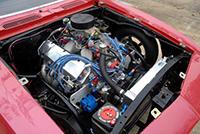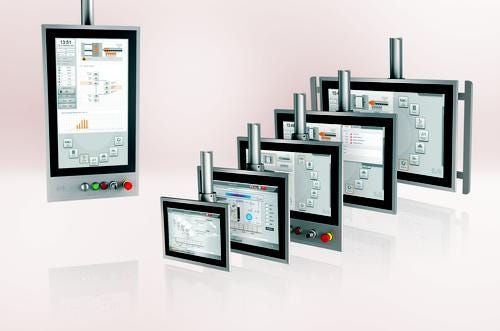June 16, 2015

The human-machine interface is the midst of an evolution and rejuvenation as the influence of touch-screen technology used in smartphones and tablets is spilling into the design of industrial operator interfaces. Add more powerful microprocessors and connectivity options into the mix, and there are new possibilities and advanced functionality that is helping to fulfill the vision of the HMI as a portal for machine communications.
While there is still a need for value-based HMI options and smaller, less expensive screens, the trends are clear including bigger screens, more resolution and colors, and solutions for harsh industrial environments. But the biggest changes come back to the influence of touch technology and a fundamental change in the ways operator screens are designed.

Impact of Mobile Technology
"The emergence of mobile devices, smartphones, and tablets is having a greater impact on HMI development," said Jen Vacendak, product support engineer and trainer for B&R Industrial Automation. "As new engineers enter the picture, they are accustomed to using those types of devices and we'll be seeing more of a merger between the two technologies."
She said this includes viewing machine status information on a tablet or smartphone, or the machine HMI itself starting to merge with the interface we would typically see on those devices. Operator terminals adopting multi-touch interface hardware is slowly gaining traction, although there are still significant benefits in using a traditional industrial panel. In applications such as pharmaceutical or food and beverage where equipment may be required to be hygienic or washdown-safe, industrial panels rated for those environments are still the primary choice.
"Mobile devices are more commonly used for remote monitoring, and less for control," Vacendak said. "E-stops still need to be hardwired, for example, and the result is that mobile devices aren't replacing HMIs but are being used to supplement them."

Focus on Remote Monitoring
"A key trend in HMIs is remote monitoring, and the ability to view screens on a mobile device such as an iPad, iPhone, or Android device," said Clark Kromenaker, product marketing manager for Omron. "Often the manufacturing supervisor wants to monitor production by viewing the HMI, and may also be getting email alerts when a certain machine is down. Remote monitoring provides an ability to view the HMI screens and gain insight into any issues."
"One interesting development is that, since everyone is using smartphones and displays, customers are asking for the same type of functionality that you use on your cell phone," Kromenaker added. "The ability for the user to swipe through screens, multi-touch capabilities using two fingers on the screen, and other smartphone features are also being requested for use on the HMI. Instead of hitting a button to go from screen to screen, for example, the user can swipe the screen to go to the next control setting."
MORE FROM DESIGN NEWS: Omron: Manufacturing Inches toward Industry 4.0
The popularity of mobile-type interfaces is also influencing the design and layout of operator interface screens. Usability has become a much larger issue and has become more important as new operators and engineers enter the workforce. Younger people are accustomed to multi-touch including pinch to zoom features, and interacting with interfaces in a different way than what has been available with traditional industrial interface design.
There is an evolution in HMI interface hardware but the demands of the factory are limiting changes to the physical hardware at the machine itself. Safety and reliability of the hardware are key concerns, and consumer products are designed for a different purpose.
Kromenaker said one trend is customers asking for larger screen sizes. Typically, he said, Omron HMIs start at 3 inches for a low-end version, and go up to 15 inches. Now there are requests for 21- to 25-inch displays, which is an interesting trend as the HMI becomes a central focus of machine visualization. Design engineers have also been interested in transferring alarm or status display screens, for example, to large 70-inch monitors that might be above the factory floor for carrying messages to a larger audience.
Control & Visualization Options
New device options that illustrate the direction of HMIs include new C panels from B&R, which are available in portrait, landscape, and widescreen formats. The panels offer bezel color choices, and include a built-in PLC processor for control. An auxiliary T panel uses the main controller's IP address to display information. One option is to use a PLC with no screen and send visualization information to the auxiliary panel, or have a C panel on the machine and one or more auxiliary panels further down the line for viewing information, as well.
For high-performance applications, users commonly select a standalone industrial PC for control. But the integrated controller/panel offers an effective solution for less demanding needs for machine and motion control using the Powerlink network.
"We offer custom Mylar overlays that can be ordered in low quantity, and allow our customers to provide their own design. For automation panels that come in larger sizes, offering single and multi-touch displays, users have the ability to add stop-start buttons, a keypad, or an E-stop to be built into the panel," Vacendak said.
About the Author(s)
You May Also Like



